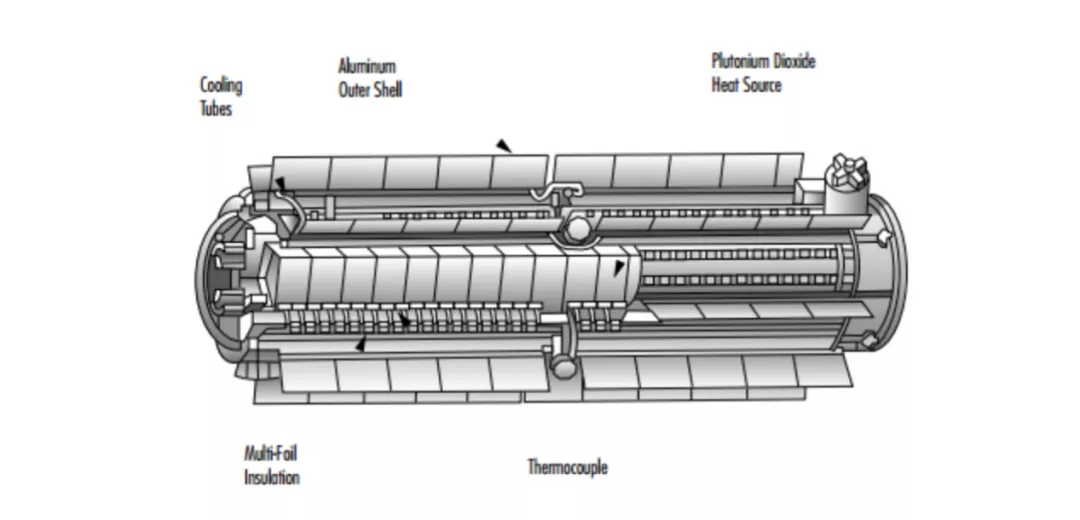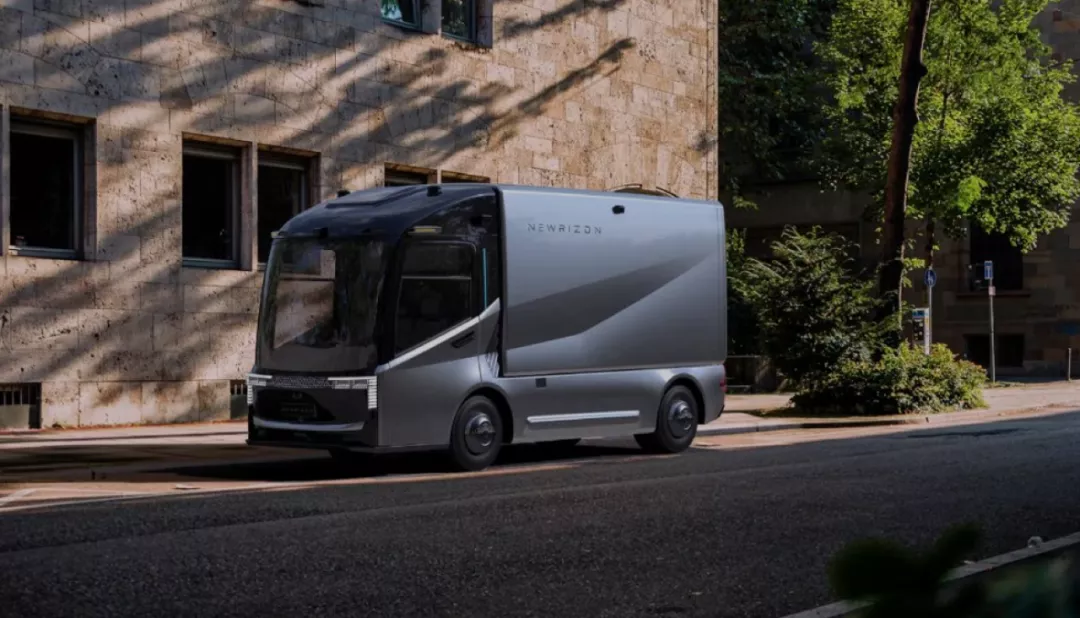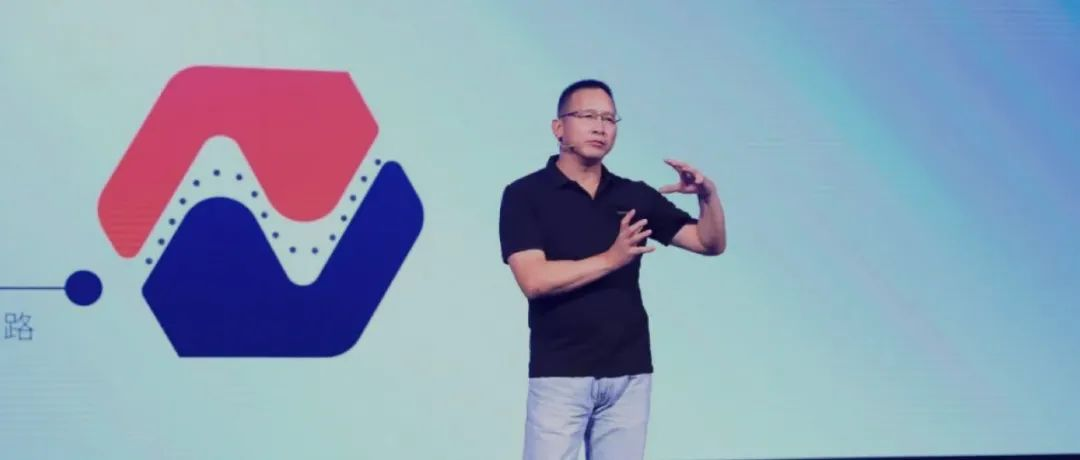Introduction: The path ahead is full of possibilities. Inspired by the morning light, we continue to explore. Whether it’s the vast universe or the long road ahead, as long as we embark on the journey, we will eventually arrive at our destination.
On January 19th, 2006, NASA launched their fifth spacecraft to venture beyond the solar system from Cape Canaveral in Florida. The spacecraft is currently traveling towards a Kuiper Belt object known as 2014 MU69, and it is called the New Horizons spacecraft.

In the fourteenth year after the New Horizons spacecraft was launched, a company called Newrizon was founded by Huang Chendong, who was the former head of the New Horizons propulsion system research and development.

Huang Chendong openly admits to being someone who is never content with staying within their comfort zone. He’s like a backpacker who’s always on the move, exploring one point on the map before moving on to the next. Throughout his career, he’s never been in a state of permanent comfort.
In the late 1990s, Huang obtained his Ph.D. in mechanical engineering from the University of Michigan. After graduation, he joined AMPS, Inc. in the US and participated in NASA’s Ice and Fire program, where he was responsible for the development of the New Horizon spacecraft’s propulsion system for the Pluto flyby mission.

Since Pluto is so far away from the sun, it takes four hours for sunlight to reach it. The amount of solar energy received by Pluto is only one-thousandth of what Earth receives. Under these conditions, nuclear power became the only option for the spacecraft’s propulsion system. This may have been where his passion for clean energy began.
After working at NASA, Huang went on to work at Ford and was involved in the development of electric and fuel cell vehicles, for which he received the Best Invention Award from the Ford Research Institute.
In 2008, Huang Chendong returned to China as a foreign expert and joined SAIC Motor Corporation Limited as a Vice President.
 The concept of fuel cell cars is as hot in China as new energy vehicles were a few years ago. However, due to insufficient technology, Huang Chendong, a member of the team that participated in the development of Ford’s fuel cell cars, knows very well that this industry requires high technology, high investment, and high cost.
The concept of fuel cell cars is as hot in China as new energy vehicles were a few years ago. However, due to insufficient technology, Huang Chendong, a member of the team that participated in the development of Ford’s fuel cell cars, knows very well that this industry requires high technology, high investment, and high cost.
Therefore, Huang Chendong decided to design a customized plan for SAIC. He planned a suitable fuel cell car technology roadmap for SAIC, and successively led the demonstration operation of new energy vehicles at Shanghai Expo and the product planning and development of new energy vehicles for SAIC.
After continuous efforts, SAIC’s fuel cell cars have achieved remarkable results and have a promising future, but this is not the end of Huang Chendong’s journey.
In 2015, Huang Chendong joined NIO as one of the founding members and served as the Senior Vice President responsible for the development of the three-electricity system and autonomous driving system.
In addition, Huang Chendong also served as a member of the United States Department of Energy’s FreedomCAR Committee, a member of the Chinese Ministry of Science and Technology’s “863” expert group, a member of the Shanghai Magnolia Award and Thousand Talents Program, and a part-time professor at Tsinghua University, Xi’an Jiaotong University, and Tongji University.
In 2020, it was Huang Chendong’s fifth year at NIO, but he decided to leave. The outside world has been guessing about the reasons, and various rumors abound.
In fact, the truth is simple.
At the end of 2014, Li Bin contacted Huang Chendong and talked to him about the development of NIO and other matters. After a night of communication, Huang Chendong decided to work with Li Bin.
After joining NIO, Huang Chendong led the team to develop NIO’s three-electricity system and autonomous driving from scratch. Finally, he brought NIO two three-in-one electric drive systems, two water-cooled and replaceable battery pack systems, and autonomous driving systems. In five years, Huang Chendong has helped NIO build a research and development framework and do the groundwork, once again demonstrating his creative style.
NIO has completed the process of “from 0 to 1”. Huang Chendong decided to start a new “0”, which is why he chose to leave. This time, he is not walking to the task points that have already appeared on the map, but leaving his own mark on the map and transforming from a practitioner to an entrepreneur.”I basically think that the passenger car market is now a saturated market, where only the financially strong can survive and even for them, it’s not easy. For ordinary people, once they fall into it, it’s difficult to get out. This is my overall judgment,” said Huang Chendong, a translator in the automotive industry. Nowadays, the passenger car market is already saturated, and except for some brands that have accumulated a long time of customer loyalty, it may not be the best choice for entrepreneurs.
On the other hand, the commercial vehicle market has a smaller market size, but due to the short life cycle of commercial vehicles and fewer brands available, the profit potential for users is relatively higher.
At the beginning of his entrepreneurial journey, Huang Chendong originally planned to start with heavy-duty trucks, but found that he needed to make hydrogen fuel heavy-duty trucks to seize market opportunities. At the same time, the imperfect supporting facilities and high cost of hydrogen gas made the marketization of heavy-duty trucks quite difficult. In this industry under the current situation, not only does it require years of accumulation by the company, but it also needs the changes of not just one brand.
Taking all factors into consideration, Huang Chendong chose to shift from heavy-duty trucks to electric light-duty trucks, which are more suitable and needed in today’s market.
However, after determining the direction, Huang Chendong faced a new problem – financing. In the saturation of the passenger car market, where there were already high cost electric commercial vehicles, Huang Chendong found it difficult to find investors who shared his vision. But for Huang Chendong, such challenges were like the ones he had faced in the past, providing him with experience in upgrading.
From July to August 2020, Huang Chendong’s road to financing was difficult, until he met Mi Qun from Lightspeed China Venture.
As Mi Qun said, “if something is interesting, it doesn’t matter if you find out later.” This event is worth Huang Chendong’s failure, reflection, and eventual success. Perhaps the commonality of emotions and idea compatibility is one of the reasons why Huang Chendong and Mi Qun reached an agreement.
In July 2012, the State Council issued the Energy-saving and New Energy Vehicle Industry Development Plan (2012-2020), which pointed out the need to seize opportunities, accelerate the cultivation and development of energy-saving and new energy vehicles, and promote the optimization and upgrading of the automotive industry.
On October 26, 2021, the State Council issued the “Action Plan for Carbon Peaking by 2030,” which calls for the acceleration of the reduction of coal consumption, strict and rational control of coal consumption growth during the “14th Five-Year Plan” period, and gradual reduction during the “15th Five-Year Plan” period, while also vigorously developing new energy.
As for carbon emissions in the dual-carbon economy, the popularization of electric passenger vehicles has achieved some results, and Mi Qun believes that the electrification of transportation is an inevitable trend. Although the proportion of commercial vehicles seems to be less than that of passenger cars, the carbon emissions are actually higher due to longer periods of use.
The “2021 China Mobile Source Environmental Management Annual Report” released by the Ministry of Ecology and Environment shows that automobiles are the main contributor to the total amount of pollutant emissions.According to data from the Ministry of Public Security, the number of cargo-carrying commercial vehicles in the first half of 2021 was approximately 30 million, accounting for only 11% of the total number of vehicles, but carbon dioxide emissions accounted for more than 50%. If the development of electric light trucks and new energy commercial vehicles can be achieved, it will bring many important changes for the future.
In Huang Chendong’s outstanding resume, it is also a powerful boost for investors to consider the technical difficulties of commercial vehicles.
In September 2020, Qianchen Automotive received exclusive Series A investment from Lightspeed China amounting to tens of millions of dollars.
“This is the best era. The development of the country and society has given green technology enterprises unprecedented opportunities and challenges. We should firmly grasp the pulse of the times, cultivate our own track, continue technological innovation, and constantly solve pain points and demands for the industry and users,” said Huang Chendong in the 3rd Global New Energy and Intelligent Automobile Supply Chain Innovation Conference in October 2021.
According to Zhang Liqun, a research fellow at the Development Research Center of the State Council, “China’s economy still has high growth potential, and the Central Economic Work Conference, which ended recently, has determined the basic direction of China’s economic development in 2022.” The long-term fundamentals of China’s macro economy will not change, and the automobile market will continue to grow.
Although new energy commercial vehicles are highly regarded by many, the industry’s “old stubborn” problem is not easy to solve. Huang Chendong believes that advanced technology from passenger cars can be applied to commercial vehicles first to minimize the technical gap.
Currently, the new forces of commercial vehicles focus on cooperation, autonomous driving, and technological development. Not many of them start their own manufacturing today, and most of them are focused on improving heavy-duty trucks from the perspective of autonomous driving. In fact, the potential for carbon emissions reduction and operational efficiency is limited. Qianchen’s entry point is light trucks, which is its biggest difference and also a winning chip in the competition.
Compared with the past when commercial vehicles were concerned with costs, Qianchen focuses more on solving problems through technology and using AI algorithms to “tailor” for drivers with different habits, thus effectively reducing the operating costs of commercial vehicles.
On August 5, 2021, Qianchen Brand and Product Launch Conference was held in Shanghai. One of the core technologies released was the Horizon E-Platform, which has an intelligent integrated domain control system, high-efficiency integrated coaxial electric drive axle, and an integrated liquid-cooled battery pack. At the same time, the first fully forward-facing self-developed and evolution-capable pure electric logistics vehicle, iC1, made its global debut.# Introduction
The EC1 is the first mass-produced vehicle of Future Mobility Corporation, jointly developed and manufactured in cooperation with China National Heavy Duty Truck Group Qingdao Haihong Co. Ltd. The vehicle’s biggest advantages come from its innovative lightweighting, ultra-low power consumption, and high integration new vision electric platform.

Vehicle Integration
The vehicle boasts over 12 weight-saving technologies, including new materials and topology optimization in the chassis, lightweight suspension, and other aspects. The power platform features an integrated coaxial electric drive axle, an integrated liquid-cooled battery pack, integrated high-voltage components, and an integrated domain controller that achieves higher efficiency while reducing weight.
The EC1 ultimately achieves a 400-kilogram reduction in vehicle weight, ultra-low power consumption, and provides more weight space for loading. Additionally, all of its vehicle control software is developed in-house by Future Mobility Corporation’s team and has powerful energy efficiency optimization algorithms, providing infinite possibilities for energy savings and increased range.

Safety and Stability
The vehicle’s other major advantage is its safety, stability, and reliability. It adopts an integrated constant-temperature liquid-cooled battery system, coupled with a thermal insulation design and intelligent thermal management system, to achieve ultimate performance, safety, stability, and durability of the battery system. The EC1 also achieves a range of over 220km under full load CLTC comprehensive working conditions and over 400km under constant speed working conditions.
In terms of safety, the vehicle’s status is monitored in real-time through the OASIS monitoring platform, and pre-warning is provided, and proactive services are carried out, to ensure that safety is always a top concern.
Not only the EC1 but also the iC1 has demonstrated Future Mobility Corporation’s pioneering vision of China’s new energy logistics vehicles. The iC1 adopts a single-frame conventional design philosophy, intelligent living room cab, custom smart luggage compartment, and has a range of other innovative achievements, such as the OASIS data platform and level 4 autonomous driving.
Conclusion
Future Mobility Corporation has released two vehicles in less than a year, which may seem rapid to some. However, Huang Chendong believes that if Future Mobility Corporation wants to truly establish itself in the market, it must maintain this fast pace as there are already many new players entering the market.
Xu Changming, Vice President of the National Information Center, pointed out that China’s commercial vehicles’ new energy is basically in a state of “low-level hovering” in recent years. The reason for this is mainly because commercial vehicles, as production materials, have relatively complicated operating scenarios and sensitive operating costs. The new energy process of commercial vehicles has been dominated by the passenger vehicle sector, and the proportion of new energy commercial vehicle sales has not shown a sustained growth trend.
Chinese Automobile Circulation Association Secretary-general of the Commercial Vehicle Professional Committee, Zhong Weiping, said: “At present, there are many difficulties in the development process of commercial vehicles with new energy in China, including operating costs, operating efficiency and adaptability to operating scenarios. Once these key problems are solved, the process of the electrification of commercial vehicles will accelerate significantly”.
Faced with technical difficulties and high costs, Huang Chendong had his own plan, and he established his own “strong output” team in the former Morning Automobile Company, with core capabilities such as intelligence and whole vehicles. However, whether these capabilities can be fully utilized depends on market verification. This can also be seen that maintaining an efficient pace is important for the former Morning Company. Huang Chendong said that this is like playing basketball and requires appropriate offense and defense.
“The ultimate goal of technology is to create happiness for more people.” Using the power of technology to provide users with humane, affordable, and profitable products is Dr. Huang’s entrepreneurial mission. On the road to progress, there is always hope for a bright future. With the name of the former Morning, we will continue to explore. No matter the vast universe or the long road ahead, as long as we set off, we will eventually reach our destination.

This article is a translation by ChatGPT of a Chinese report from 42HOW. If you have any questions about it, please email bd@42how.com.
